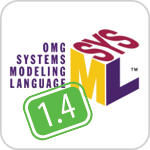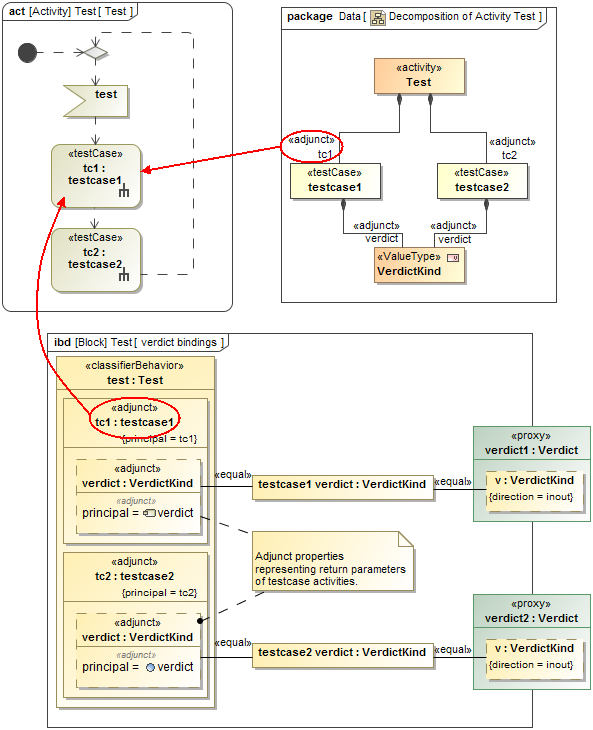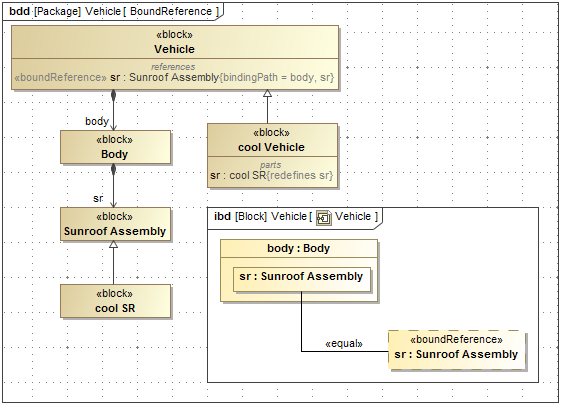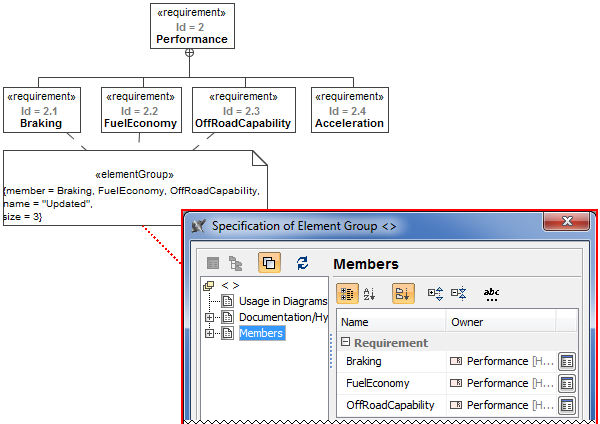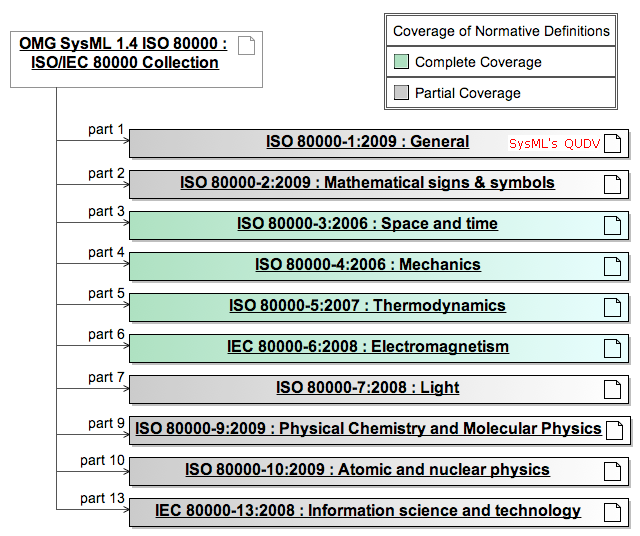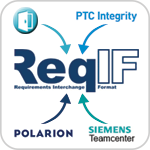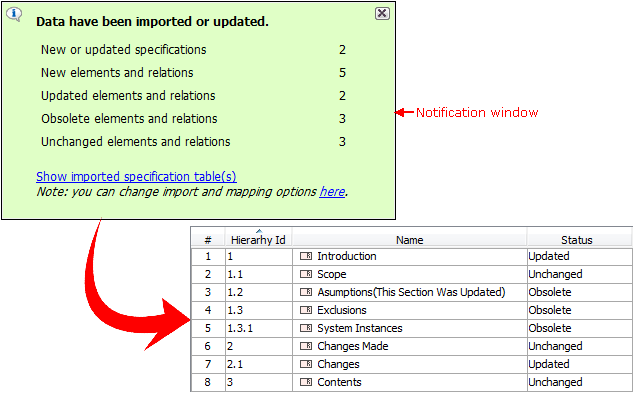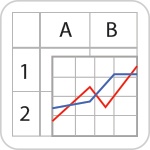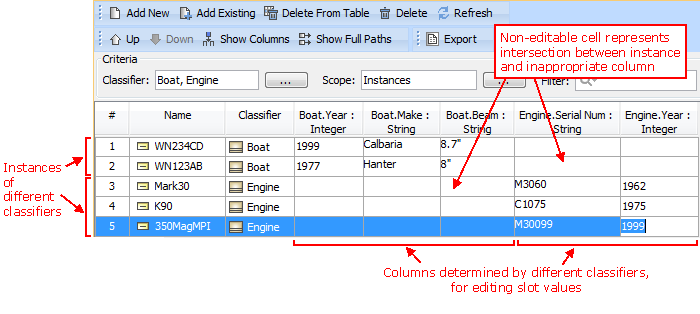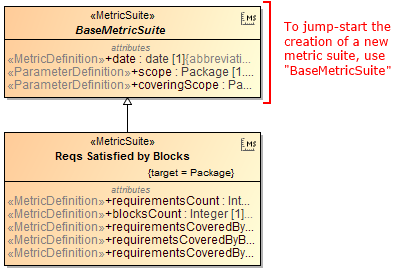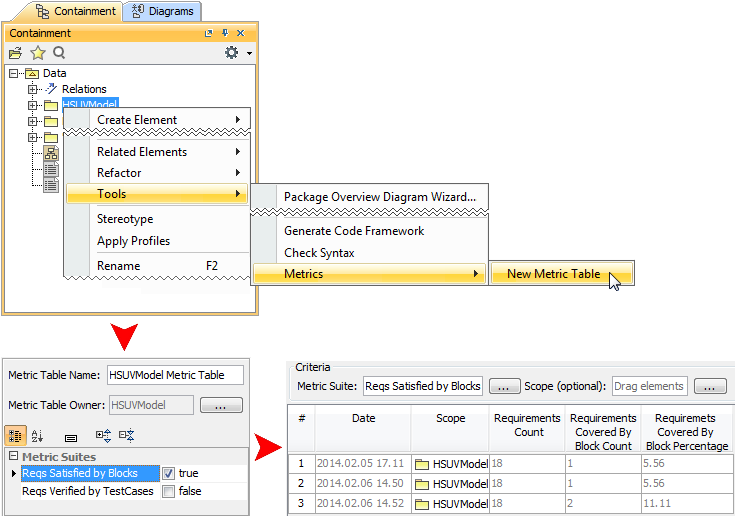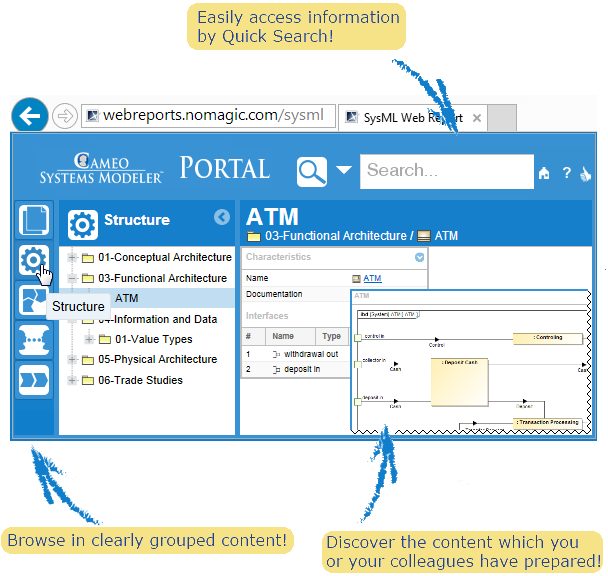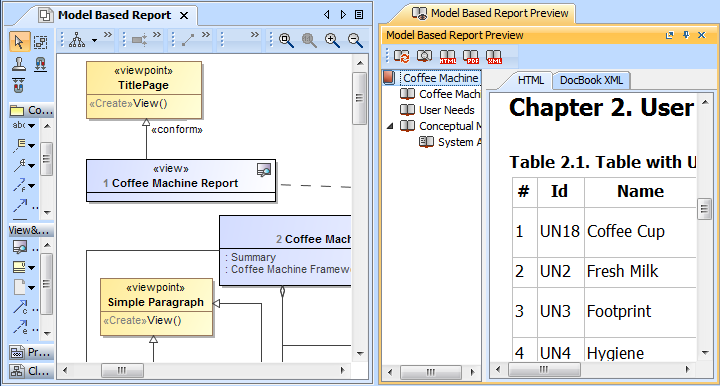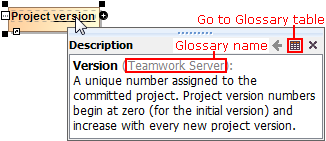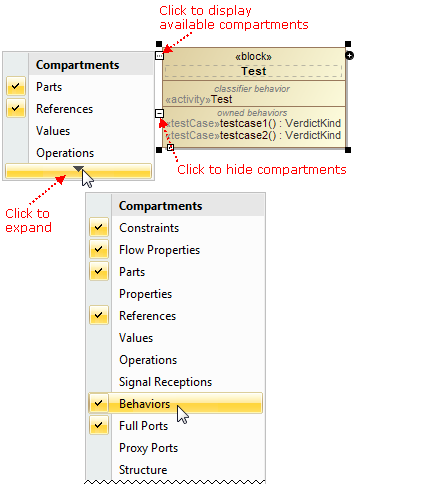Release date: 2nd June 2014
Cameo Systems Modeler Enterprise Edition
The new Cameo Systems Modeler Enterprise edition, with Cameo Simulation Toolkit bundled in for engineering analysis automation. For more generic Cameo Simulation Toolkit new features and enhancements, visit What's new in Cameo Simulation Toolkit 18.0 LTR?
NOTE. The Cameo Simulation Toolkit evaluation version is also included in the Cameo Systems Modeler Architect edition.
Navigation Through Non-properties
SysML 1.4 adds an extension of properties, so they are now able to represent behavior diagram elements, semantically equivalent to properties, such as behavior parameters, call actions, or object nodes. This enables navigation through non-properties using deep nested connectors, and structural and behavioral elements linking, such as ports association with behavior parameters.
Bound Reference
Bound Reference provides the modeler with a new way to quickly redefine and constrain deep nested system parts, without the considerable modeling efforts required previously. Bound Reference creates a virtual “shortcut” to a deep nested system part where multiplicity and type can be restricted by direct redefinition in subtypes.
Element Group
The SysML 1.4 ElementGroup concept provides a convenient and lightweight mechanism to group model elements based on an arbitrary defined criterion without imposing ownership or containment constraints.
An element group is persistent, but does not own its elements and thus an element can participate in an unlimited number of named groups. For example, it can group elements associated with a particular baseline, have a certain risk level, responsible person, review status or any other custom criteria. Each Element Group is based on a UML Comment and extends the capability of comments to refer to multiple annotated elements, as shown below:
New QUDV and ISO 80 000
The SysML 1.4 QUDV library was improved to:
- Comply with International vocabulary of metrology (VIM 3rd edition)
- Encode ISO/IEC 80000 definitions of base quantities and units to provide semantics for computer-based dimensional analysis
The ISO/IEC 80000 library, which is a collection of 14 standards, is available to use in new projects on demand (from the shortcut menu, select Modules > Load Module).
The instance table is a spreadsheet-like data entry and review interface. Actually, the feature is based on a generic table.
With the help of an instance table you can easily:
- Review instances of one or more classifiers, in the single place.
- Create instances for one or more classifiers.
- Edit slot values of the instances displayed in the table.
- Customize the representation of the table.
- Export the data into an HTML, XLSX, or CSV file.
Cases for the practical application:
- Instance specifications management
- Testing data and results representation
- Parametric analysis results
- Excel spreadsheet import and representation
- Bill of Materials (BOM)
- Trade studies
All that needs to be done is create an instance table, add the instances, and then choose the slots to review and edit. This form of reviewing and editing data will definitely save a lot of time, as opening the Specification window of each instance is no longer required.
New Approach for Calculating Metrics
Need to perform a comprehensive analysis of current state of your project or get only the numerical evaluation of some particular aspect of it? Must track the evolution of your model over the course of time? Expect to have all the information represented in a user-friendly environment? Try the new approach for calculating metrics!
With this new approach you can
- Create metric suites for calculating metrics.
- Calculate metrics according to given parameters.
- Easily customize the representation of the metrics in the new type table – the metric table.
Creating a new elementary metric suite is as simple as creating a new class with a couple of stereotyped attributes: one for parameter definition and one for metric definition.
The parameter definition can be any model element or a primitive type, such as real or integer. The metric definition, that is, a formula for calculating metrics, can be easily specified either as a structured expression (by using the operations of the expression evaluation engine) or as a script operation written in any script language supported by MagicDraw (for example, JavaScript, Jython, Groovy). Moreover, one metric definition can use the results of other metric definitions.
Once the metric suite is created, you can calculate the metrics for a selected element. Analyze the results of the calculations, that is, metrics, in a metric table, which is automatically created for these metrics representation. You can easily reorganize the columns of the table, calculate new metrics, and recalculate the existing metrics with other parameters.
Web Portal report template
Web Portal report provides a capability of sharing model information among all stakeholders in a browsable, clean and less-technical way. As opposed to the existing Web Publisher report, it does not clone original SysML model view, but re-organizes the most essential and relevant information by the Four SysML Pillars - Requirements, Structure, Behaviors and Parametric Constraints. Reviewers can provide feedback on any element or diagram.
NOTE. This is a technology preview of the systems engineering functionality. Please explore this new technology, experiment with it, and get back to us at support@nomagic.com with your feedback and suggestions about possible improvements or features you are missing. We seek to create as serviceable tool as it could be, so we are thankful and very appreciative of your contributions!
Model based document generator
SysML 1.4 improves the concept of View and Viewpoint to reflect perspectives of different stakeholders. The views are constructed from a subset of the model that addresses their concerns. Cameo Systems Modeler introduces a new technology which interprets the SysML 1.4 Views and Viewpoints models to construct XML document conforming with DocBook standard. A combination of diagrams, tables, model queries and simple text fragments can be presented in a built-in preview window or exported to PDF or HTML documents.
NOTE. This is a technology preview of the document modeling functionality. Please explore this new technology, experiment with it, and get back to us at support@nomagic.com with your feedback and suggestions about possible improvements or features you are missing. We seek to create as serviceable tool as it could be, so we are thankful and very appreciative of your contributions!
Extended Script Languages Support
Custom validation rules, derived properties, queries for smart packages, metric definitions, criteria for dependency matrices, and so forth can now be defined (as executable operations) in any of the following script languages:
- JavaScript
- Jython
- JRuby
- Groovy
- BeanShell
This speeds writing of these operations, since an already known language can be used rather than learning additional languages.
Glossary
Avoid confusion – use Glossary! Define your terms in one place and later use them everywhere in your project. Reuse glossaries in other projects.
Glossary saves time by ensuring consistent usage of terminology in the organization. It also improves the communication between team members since terms are understood in the same way and definitions become visible everywhere the terms are used.
Creating a term is quick and easy. Just do one of the following:
- Add any word or phrase to the glossary while typing or editing.
- Drag any element you wish to become a term to the glossary table.
- Click the Add New or Add Existing button on the glossary table toolbar.
After terms are defined in the glossary, it is easy to use them in your project. Just press Ctrl+spacebar while typing to get a list of available terms.
For your convenience, a term description becomes visible when you move the pointer over this term.
Enhanced Compartments and Their Management
- New smart manipulator for quick compartments enabling/disabling on the left shape border.
- Empty compartment lines are not shown anymore, making shapes cleaner.
- Labels added on all compartments, including operations, signal receptions and others.
- New Behaviors compartment on Blocks and parts listing their behaviors.
- Port, as a special kind of the Part, is capable showing all Part compartments now, including default values, structure, operations and even behaviors.
SysML Profile API Changes
SysML Profile API changes were made in relation to the SysML 1.4 support.
The following constants were moved from the com.nomagic.magicdraw.sysml.util.SysMLProfile to com.nomagic.magicdraw.sysml.util.MDCustomizationForSysMLProfile:
public static final String CONSTRAINTPROPERTY_STEREOTYPE = "ConstraintProperty";
public static final String QUANTITYKIND_STEREOTYPE = "QuantityKind";
public static final String QUANTITYKIND_DEFINITIONURI_PROPERTY = "definitionURI";
public static final String QUANTITYKIND_DESCRIPTION_PROPERTY = "description";
public static final String QUANTITYKIND_SYMBOL_PROPERTY = "symbol";
public static final String UNIT_STEREOTYPE = "Unit";
The following methods were moved from the com.nomagic.magicdraw.sysml.util.SysMLProfile to the com.nomagic.magicdraw.sysml.util.MDCustomizationForSysMLProfile:
getConstraintProperty()
getQuantityKind()
getUnit()
isQuantityKind()
isUnit()
isConstraintProperty()
The constant NESTEDCONNECTOREND_PROPERTYPATH_PROPERTY changed to ELEMENTPROPERTYPATH_PROPERTYPATH_PROPERTY.
Fixed Issues
- To open the list of publicly available or your own system modeling specific issues those have been included into version 18.0 LTR, click here.
- To open the list of publicaly available or your own simulation specific issues those have been included into version 18.0 LTR, click here.
- To open the list of publicaly available or your own other issues those have been included into version 18.0 LTR, click here.
